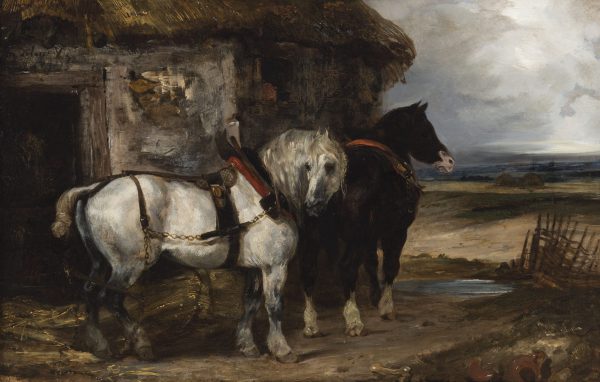Two Workhorses, 1825-1832.
Oil on mahogany panel., H. 0.40 m; W. 0.63 m
Signed upper left: Delacroix.
Provenance: Posthumous sale, Paris, 15-19 February 1864, no. 203, (bought for 250 fr. by M. de Hérédia).
Private collection.
Alfred Robaut, L’œuvre complet de Eugène Delacroix, Paris, 1885, supplément, p. 461, no. 1867 « Deux chevaux de trait », no. 203 de la vente posthume (250 fr. à M. de Hérédia).
Attacked during his lifetime for his formal audacity, which later led to him being judged a brilliant precursor, Delacroix is now considered to be the leader of the Romantic school and as such he is usually placed in opposition to Jean-Dominique Ingres and his pupils. However, Delacroix defined himself as a “pure classical” and his painting has always claimed and assumed the notion of a subject. His art is characterized by exceptional richness and vigour.
Delacroix had the same love of horses as his friend Théodore Géricault. Besides, he always interpreted animals in a stunning manner, going as far as to match the aspect of his horses with the spirit of the subject itself: Trajan’s horse is compassionate, Mephisto’s one is diabolical, Attila’s is supernatural.
In our painting showing two workhorses in front of a stable, the rapidity of handling has allowed the vivacity and trembling of the animals to be captured. On the right a landscape stretches out with broad cloudy horizons, painted in a very fluid manner in radiant colours. This enlarging of the space and intensification of colours shows Delacroix’ interest in English painting, especially Constable, whose Haywain was exhibited in Paris during 1824. Delacroix became friendly with several English painters, including Richard Parkes Bonington, whom he appreciated particularly.

